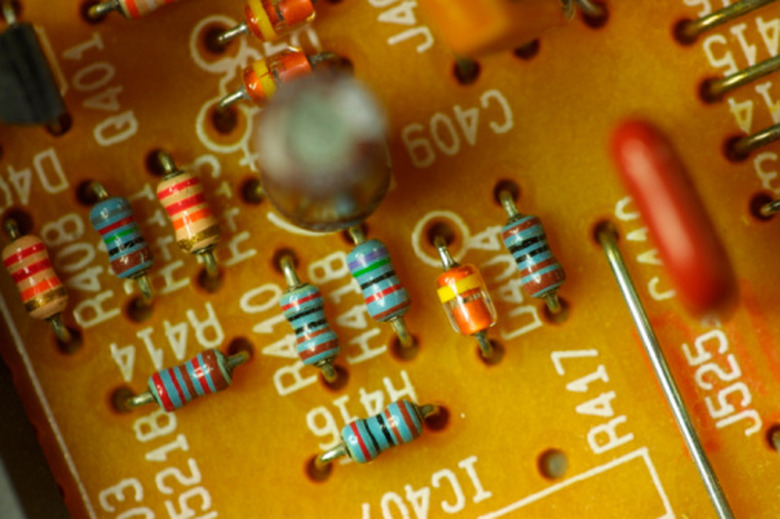How To Calculate Instantaneous Voltage
Many circuits experience a time delay between the time a voltage is applied and the time that voltage appears at the circuit. This time delay happens because capacitors in the system have to first charge up to the supply voltage before the voltage in the capacitor equals the supply voltage. This time delay is called the time constant. That said, there is an instantaneous voltage that appears at the circuit regardless of the time delay and you can calculate that voltage using the equation associated with an RC charging circuit.
Step 1
Choose a resistor, or "R," for the RC circuit. As an example, assume R is 40 ohms.
Step 2
Choose a capacitor, or "C," for the RC circuit. As an example, assume C is 12 microfarads.
Step 3
Calculate the time constant, or "T," using the formula T = R x C. Using the example numbers:
T = (40)(12 x 10^-6) = 480 microseconds
Step 4
Calculate the instantaneous voltage using the formula: V (inst) = Vo (1-e^-t/T) in which Vo is the power supply voltage, t represents the time the power supply has been on and V (inst) is the instantaneous voltage that exists at the instant the power supply is turned on at t = 1 microsecond. Assume Vo is 120-volts:
t/T = 1/480 = 0.002
e^-t/T = e^-002 = 0.998
V (inst) = Vo (1-e-t/T) = 120 (1 – 0.998) = 120 (0.002) = 0.24 volts
Cite This Article
MLA
Chestnut, Dwight. "How To Calculate Instantaneous Voltage" sciencing.com, https://www.sciencing.com/how-8507371-calculate-instantaneous-voltage/. 7 August 2017.
APA
Chestnut, Dwight. (2017, August 7). How To Calculate Instantaneous Voltage. sciencing.com. Retrieved from https://www.sciencing.com/how-8507371-calculate-instantaneous-voltage/
Chicago
Chestnut, Dwight. How To Calculate Instantaneous Voltage last modified March 24, 2022. https://www.sciencing.com/how-8507371-calculate-instantaneous-voltage/
